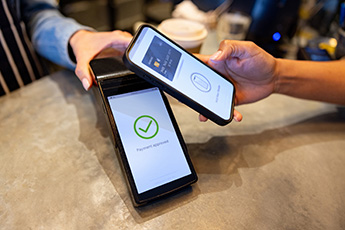As you get ready to travel this summer, you should know that Hawaii just passed a bill that bans sunscreens containing ingredients that may damage or kill coral. It still needs the governor's signature, but it sounds pretty much like a sure thing. Hawaiian visitors will need to thoroughly research and consider new sun protection options, as some 70% of sunscreens on the market today have those ingredients.
Community bankers these days have lots to consider as well, particularly when it comes to striking the right balance between digital and physical delivery channels.
A large percentage of Americans now have at least one financial app on their smartphones, and they are using these apps far more frequently than they were even a few years ago. However, many digital banking customers are not satisfied with their digital experiences.
According to the results of a recent study from Bankrate, 63% of Americans now have at least one financial app on their smartphones and they use them fairly regularly. In fact, 70% of the people who have mobile banking apps on their smartphones say that they check them at least once a week, while another 16% check them every day.
Needless to say, this customer behavior provides a good opportunity for community banks to demonstrate their value to customers and build relationships. However, as you know, customers are getting more impatient and expect a seamless experience no matter the channel. So, staying on top of the game with your digital banking effort is critical.
Some customers may also be easier to please than others, of course. According to the findings of another survey from D3 Banking Technology and Harris Poll, 68% of Americans who have used online banking platforms or mobile banking apps are frustrated with their experience. A large 32% of digital banking users also say they would be willing to switch banks, if they believed that doing so would lead to better online and mobile banking experiences.
Not surprisingly, younger customers have higher expectations for their digital banking services, and are therefore more likely to be frustrated. Of digital banking users between the ages of 18 and 34, 73% say they have been frustrated by their experience over the past year, while only 61% of users age 55 and above say they have been frustrated during that same period.
Providing the right set of digital features may be one way to satisfy these banking customers. According to D3/Harris findings, these app features are the most important: mobile deposits (70%); P2P (66%); and mobile account opening (51%). Here again, the survey found age influences how different customers use digital banking services and what they are looking for.
While you continue to process the information from these surveys, remember that you know your customers best. However, it could be a good time to review where you are with your mobile app and online banking platform. These should be updated along with the changing needs of your customers, but also along with the advancement of technology.
To stay ahead of the game, stay in touch with your IT team and your core vendor on any emerging technologies that could help, and talk to your customers for their specific preferences. From these conversations, you will know best how to deliver what your customers want before you wade into the digital waters.




